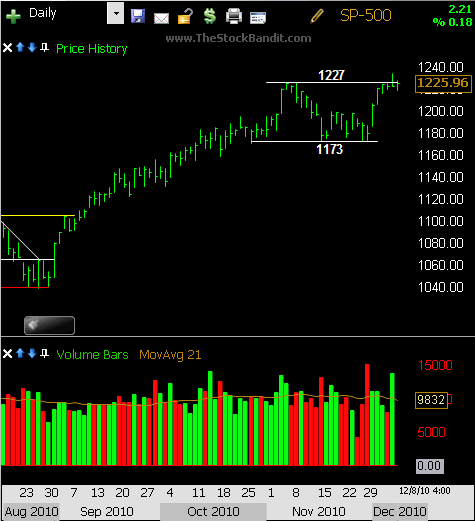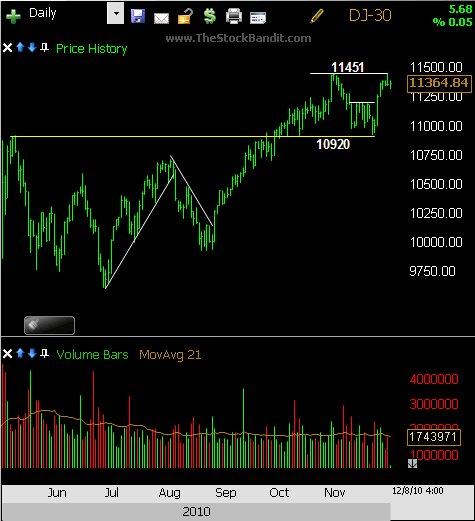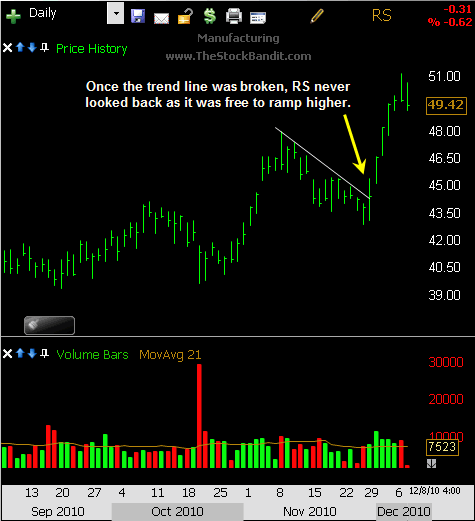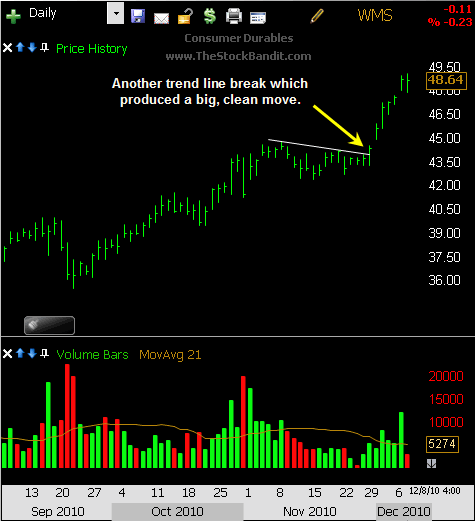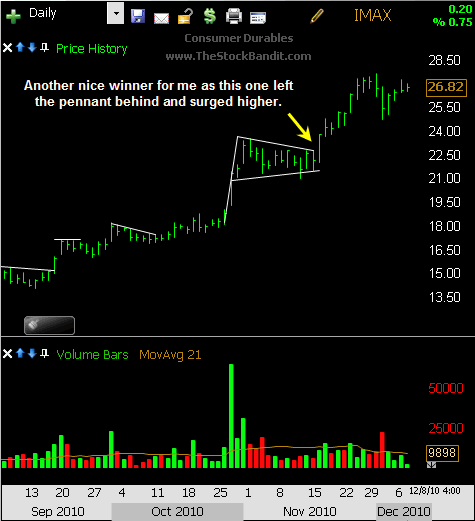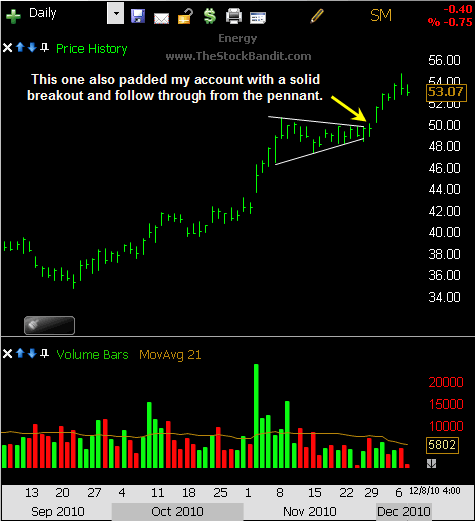Search Results for 'traders'
Lessons From a Life-Long Speculator
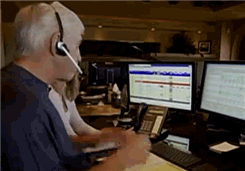 I caught a clip from a recent 60 Minutes interview in which a Las Vegas gambler named Billy Walters was profiled. This is a man who, at 64 years old, understands risk and edge as well as anyone. As a result, he’s been dubbed “the most dangerous man” by Vegas sports books.
I caught a clip from a recent 60 Minutes interview in which a Las Vegas gambler named Billy Walters was profiled. This is a man who, at 64 years old, understands risk and edge as well as anyone. As a result, he’s been dubbed “the most dangerous man” by Vegas sports books.
Walters has been a life-long speculator, betting on golf courses and in pool halls, and of course he wagers regularly on football and basketball games. He’s no stranger to streaks, having mentioned he’s been broke more times than he can recall, and yet the show stated he’s currently worth “hundreds of millions.”
The interview is embedded below, and you’ve got to see it, but before we get there I just want to point out a few things Walters clearly does exceptionally well. As traders, and therefore speculators in a different realm, we can all learn from him.
Success isn’t about making one big bet. Note in the clip below how Walters never lets it all ride on one game, instead he spreads out his capital across multiple opportunities. He’s confident in the outcomes, but by operating in different games and even different sports, he also helps to protect his outlay from unforeseen events. For the trader: don’t put your entire account into one idea.
Success goes hand in hand with passion. Walters’ net worth is said to be in the hundreds of millions, so why does the show depict him placing more bets of a few hundred thousand or mention he’s up $1M that week on his games? Because he’s passionate about it, he loves it. For the trader: if you don’t love the game, it’s going to be hard to get through the tough times and persist.
Get bigger when you have an edge. Over the years, Walters has increased his bets along with the expansion of his bankroll. But beyond that, when Walters sees a line that’s vastly different from his own, he bets very aggressively. He trusts his edge, and looks to exploit it most when that edge is biggest. For the trader: when your home-run setups come along with defined risk, size up.
Be creative. Walters used to be small enough he didn’t move the lines in the sports book when he placed his bets, but over time, he’s become a major player. That’s required him to adjust his system along the way, utilizing his team of associates to place bets for him. He also may push a line one way, then bet big on the other side. For the trader: don’t get stuck trading only one way, keep looking for a better approach.
Be persistent. A guy who claims he’s been broke many times clearly exemplifies persistence to not only still be in the game, but to be such a huge success. When the proverbial (or literal, in his case) chips were down, Billy Walters hung in there and kept fighting. He expected success, and he kept working until he got it. For the trader: stay in the game and don’t give up.
Surround yourself with sharper minds. Walters admits his team is made up of people who are all smarter than he is. That doesn’t mean he isn’t confident, but rather that he relies on others to provide assistance where he feels his skills are lacking. He’s no doubt the biggest success among them, but he attributes that to the bright people on his team. For the trader: if you’re not getting where you want to be on your own, get some help.
Play for meaningful stakes. One doesn’t amass a fortune by accident, and Walters hasn’t gotten rich by nickel-and-diming it along the way. He recognizes an opportunity, gauges the size of his edge, and then puts his capital at risk in expectation of a sizeable payout. For the trader: once you understand how to trade, allocate capital in such a way that you stand to make a fair amount when you’re correct – and never overtrade.
Here’s the clip:
Trade Like a Bandit!
Jeff White
Producer of The Bandit Broadcast
Are you following me on Twitter yet?
One Good Trade
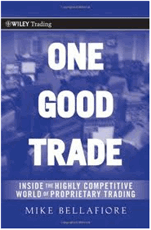 I was sent a copy of One Good Trade by the author, Mike Bellafiore, longer ago than I care to admit. (In fact, Bella, please forgive me for taking so long to get around to reading it!) I will say though, once I picked it up, I only wished I had started reading it sooner.
I was sent a copy of One Good Trade by the author, Mike Bellafiore, longer ago than I care to admit. (In fact, Bella, please forgive me for taking so long to get around to reading it!) I will say though, once I picked it up, I only wished I had started reading it sooner.
Mike’s been a trader for just a little longer than I, so a few of his earliest experiences were before I got into trading back in 1998. From there, I really enjoyed his reflective tone regarding his trading career, experiences, mistakes, lessons, and successes. His honesty was refreshing, and I enjoyed seeing how he adjusted his approach throughout the market changes over the years (as we all must) in order to survive.
But beyond the nostalgia, One Good Trade was also full of wisdom. Mike’s personal trading experience was at the heart of the lessons he teaches in the book, but his experience and insights are compounded by those of the many traders at his prop firm. I started out in a day trading office – a very similar environment where I was surrounded by dozens of other traders for my first few years. I can tell you from my own experience, Mike still learns plenty from the other guys in his office. And it shows in the lessons he relays from having trained others over the years.
I want to hit 8 highlights I found in this book in order to give you a glimpse of what’s inside. Even though I’ve cherry-picked a few of my favorites to share with you, this is still a book you need to read if you’re an active trader (so go pick up a copy!).
1. Trading – like sports – is performance based. Athletes, like traders, understand that a little talent isn’t enough…it takes hard work too. Some days (or weeks) are better than others, so it’s important to show up ready to play, both physically and mentally. Bella’s recent example of MLB great Trevor Hoffman gives an excellent example of one such mental exercise for peak performance. Getting good rest is another way to ensure you can be at your best on a regular basis.
2. Maintain lists of the setups which work for you and those which don’t. This sounds so obvious, and yet have you ever done it? Trading responsibly includes knowing what works for you and which setups tend to fail or shake you out prematurely. Understand which is which, and as Gartman says, “do more of what is working, and less of what is not working.”
3. The market doesn’t care what you wish – so you must always adapt. It’s harsh truth, but something each of us needs to hear from time to time. Mike goes on to say that the market also doesn’t reward the trader seeking lazy trades, so be creative. These go hand-in-hand for the trader who is willing to adjust his approach as the tape requires.
4. You choose your attitude. This can be said for any endeavor, including trading. Go tell Lance Armstrong that attitude doesn’t matter. In trading, Mike reminds that you can complain and make excuses, or you can compete (and find ways to use current conditions to your advantage). There will always be obstacles to overcome (HFT’s, head-fakes, etc.), but never make excuses. Poor traders blame, so don’t be one of them if you want success in trading.
5. Make the most trades with the most size during the trading periods that statistically are most profitable for you. Another seemingly obvious statement, yet one which most traders simply don’t understand. You don’t have to be a statistics nut to appreciate the fact that for your trading style, there are times when you need to be active and times when you need to sit and wait. Find out when to do which, and you’ll stop giving back gains.
6. Work on your visualization abilities regularly. This is the best way to get better, best way to grow, best way to overcome challenges, and the best way to train your brain in the way you want to respond in any situation. Mike works hard with his professional traders to not only review their trades after the fact, but he harps on the importance of mentally rehearsing how to respond to various situations. That way, when the real deal comes along, the right preparation has been done.
7. Be coachable. Traders with a stubborn attitude or who don’t listen simply won’t improve, whether it’s what the market’s trying to tell you or something someone else is teaching you. If you aren’t a listener, you’re going to either stay stubborn (and lose) or you will take the long road to improvement. Those who are coachable are more able to place their ego aside and move forward, rather than adapting to what the market’s telling you (see #3 above).
8. Trading is all about skill development and discipline. Great traders obsess over doing their job, which is to make One Good Trade at a time. They always live to fight another day, and they’re continually developing their skills so they can trade any market which comes along. Discipline is shown both at their desk and away from it, and as a result, their hard work isn’t sabotaged by destructive habits.
Bottom line: Fantastic book, and it’s not to be missed if you’re a trader who is passionate about improving.
Trade Like a Bandit!
Jeff White
Producer of The Bandit Broadcast
Are you following me on Twitter yet?
Succeed by Not Failing
Too many traders think a winning trade is a good trade, and a losing trade is a bad trade…a failure. I disagree.
The result of a trade is either a profit or a loss, but not a success or a failure. Good trades can end up being losses, and poor trades can sometimes result in a profit. For example, jumping in front of a big move on a whim in hopes of getting lucky timing a reversal is a poor trade, but it may still make you money. Good luck repeating that over time.
So, rather than focus on losing trades as the definition for ‘failure’ in trading, let’s take a look at 3 common ways traders fail:
 To fail in trading is to not have a plan. Failing to plan is planning to fail, according to John Wooden, and he knew a thing or two about success. Great traders know what they’re doing when they go to execute an order. They have an expectation for the trade, a reason behind it, and an exit strategy which they will absolutely follow. Even beyond a per-trade basis, you should have a plan in place for your style, your goals, and when you’ll be cautious. Plan for dull phases in the market, plan for volatility, and plan which strategies you’ll employ and when.
To fail in trading is to not have a plan. Failing to plan is planning to fail, according to John Wooden, and he knew a thing or two about success. Great traders know what they’re doing when they go to execute an order. They have an expectation for the trade, a reason behind it, and an exit strategy which they will absolutely follow. Even beyond a per-trade basis, you should have a plan in place for your style, your goals, and when you’ll be cautious. Plan for dull phases in the market, plan for volatility, and plan which strategies you’ll employ and when.
To fail in trading is to abort your plan for something beyond your current ability. I’ve made this mistake many times, and I’ve witnessed it in others. It usually happens something like this… Consistent money has been made, confidence has grown, but greed sets in. Rather than increasing your size incrementally, you double it overnight and start adding new plays to your repertoire. Not a good combination. You lose money, you lose confidence, and now you’re unsure of what to do next. Stick with what you know. If your buddy makes a certain play look easy but you struggle with it, learn it slowly – don’t try to make your week with it on the first shot. Keep growing, but don’t rush your development.
To fail in trading is to have an inconsistent process. A good golf swing is one which repeats (doesn’t matter what it looks like — ex: Jim Furyk). If you aren’t repeating your process over time, how do you know if it really works? Suppose you focus on news today, charts tomorrow, and your favorite chat room the next day…where will your consistency come from? This also happens when you show up on Monday morning with a revised strategy, give it a day to prove itself, then move on to whatever method you think you should try next on Tuesday. It’s throwing the proverbial spaghetti against the wall to see what sticks, and that’s no way to grow as a trader. Start simple, add a little to your work load as you get more efficient, but be consistent with what you do day in and day out – at least until you can single out certain areas which need adjustment.
Avoid failure as a trader by taking action only when you have a game plan, and only when you realize the risk you’re putting on. Avoid failure as a trader by abiding by your stops, which pertains to each trade as well as your daily, weekly, or monthly loss limits. Walk away when you’re wrong, and place your ego aside. Those who fail to submit to the market are only here for a little while.
Choose to stick around…only those who stay in the game will be ready to capitalize on the best periods of opportunity when they arrive.
Trade Like a Bandit!
Jeff White
Producer of The Bandit Broadcast
Are you following me on Twitter yet?
Video Review of the Indexes 12-12-2010
The bulls reminded all last week of the fact they have the upper hand (hoof?) in this market by producing new multi-year highs and finishing off the week in a strong fashion.
At some point, we’ll see this market correct, but right now that’s apparently far from the minds of traders as they see the push into the end of the year. What’s perhaps aiding the cause of the bulls is simply the fact that we’ve seen some nice rotation between large-caps and small-caps as turns are taken for the leadership role from week to week.
As we head into a brand new week of trading, let’s examine some important levels to keep an eye on in the days ahead. That will have the greatest influence on how individual stocks are going to move, so it’s where the trading week begins.
Be sure to view in full-screen mode for best quality in the video.
Trade Like a Bandit!
Jeff White
Producer of The Bandit Broadcast
Are you following me on Twitter yet?
Trading Scene Still Great
 On Nov 1, I mentioned the scene was set to improve, and since then we’ve seen exactly that. I didn’t base that post on the notion of higher prices necessarily, because UP does not equal GOOD – just as DOWN does not equal BAD.
On Nov 1, I mentioned the scene was set to improve, and since then we’ve seen exactly that. I didn’t base that post on the notion of higher prices necessarily, because UP does not equal GOOD – just as DOWN does not equal BAD.
I’m a trader, so for me it’s all about the movement. It’s volatility that makes for a great trading environment, especially when the technicals are playing such a prominent role. We’ve seen a pick up in volatility of late, which simply delivers faster moves for us as traders.
Lately, we’ve seen exactly that. Individual stocks and the indexes alike have respected trend lines and important resistance and support levels, allowing for some excellent trading opportunities for the astute trader to capitalize on.
Taking it to the Charts
For example, the indexes have been textbook in their respect of key levels. The S&P 500 has been range-bound between 1173 support (with numerous tests of that level in recent weeks) and 1227 resistance (tagged a few times but no close above it yet). That’s perpetuating the short-term trading range, which could easily serve as a stepping stone for another advance if it’s resolved to the upside.
The DJIA also has been highly respectful of key levels. The mid-May post-flash-crash bounce carried the senior index up to the 10920 area, and since then that level has been revisited. Currently it’s serving as support over the past few weeks, while the early-November high at 11451 was tested and held on Tuesday.
Individual stocks have also made exceptional moves through important trend lines as well as out of well-defined patterns. Here’s a look at a few examples:
So the general trading scene continues to improve, which means there’ll likely be ample opportunity in the weeks ahead to capitalize on. But the market won’t give you money – you’ve got to know where to find it and how to extract it. If you’re preparing daily with several if/then scenarios, and you’re managing your risk appropriately, you’re positioning yourself for continued success.
Trade Like A Bandit!
Jeff White
Producer of The Bandit Broadcast
Are you following me on Twitter yet?
Trade Like You Don’t Need the Money
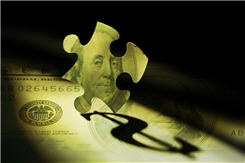 The post title says a lot, and we could probably all tape the phrase to our monitors and come away better traders.
The post title says a lot, and we could probably all tape the phrase to our monitors and come away better traders.
But let’s spend a few minutes digging a little deeper to find what it would mean to “trade like you don’t need the money.” What does that look like? What are the advantages and disadvantages of approaching your trading with this mentality?
Let’s start off by looking at some examples of people who have experienced massive success in their respective fields. That isn’t by accident, and they sure didn’t quit once they got “rich.”
Professional athletes in general make a lot of money. Many of them spend more than they make, so we’ll discard those for the sake of this discussion. There are a few superstars in every sport though, and with the global coverage most sports tend to get, they’re household names. Kobe Bryant, Derek Jeter, Peyton Manning, Tiger Woods, Roger Federer, and the list goes on. Having an 8- or 9-figure net worth is not what drives them…it’s greatness. They find fulfillment in preparing and performing in such a way that they’re the best.
There are musicians who have had the same kind of success. One of the most popular bands in the world is U2, and they had “arrived” many years ago in terms of popularity and revenue from album sales and concerts. But they kept going, kept evolving, and kept on succeeding. It’s not the money that pushes them, or else they’d have walked away long ago.
Think Record Books, Not Scoreboard
As traders, it’s so easy to become motivated by the money. Our P&L is the scoreboard that’s always right in front of us…during the day, and once the closing bell rings. We know where we stand at any moment, and that’s actually more of a hindrance to many than it is a help.
Some platforms allow you to hide profit & loss numbers, and that’s a band-aid solution which some choose to do in order to focus better on the price action and less on profits. But rather than try to treat the symptoms, why not go right to the source of the problem – your mindset.
To trade like you don’t need the money, your goals and passion have to be centered on something much bigger than money…and bigger than what that money can buy you. Your satisfaction from trading needs to be rooted in the process of attaining success.
That means you care about digging for great ideas more than booking a $1500 winner. You know if you do the former well, the latter will take care of itself.
It means you love turning off your screens at the end of the day knowing you followed your rules with discipline.
It means your undivided attention is on the market when it’s time to trade, and distractions aren’t allowed to interfere.
It means you’ll spend time doing things others won’t, like watching trading film (hat tip to @smbcapital) in order to recognize your mistakes as well as reinforce and mentally rehearse your strengths.
It means you follow other traders’ blogs and StockTwits streams only when their ideas are suited to your trading style, and you avoid all else because it becomes noise.
And it means you fuel your competitive drive day in and day out to focus on winning and nothing else. That brings with it a host of other issues, like staying out late or treating your body well, because you care about peak performance.
Trading like you don’t need the money requires passion for what you’re doing that exceeds all hopes for monetary gain. It’s a mentality of maturity whereby you realize that truly great trading will provide you with all you need and then some, and once you’ve fully accepted that, you’re able to let go of the monetary concerns and completely center your efforts on improving your process.
Put your strengths to work today with total focus, and just see what happens. If you’ll do it for a week, then a month, and build on it each day, you’ll be implementing habits which deliver all kinds of ongoing success – including money.
** If you’ve got something else to add, please share it in the comments.
Trade Like a Bandit!
Jeff White
Producer of The Bandit Broadcast
Are you following me on Twitter yet?
Options vs. Common Stock
 Traders face many hard decisions every day…buy or sell, add or lighten, stand aside or get involved. Among them is the choice between trading options or common stock.
Traders face many hard decisions every day…buy or sell, add or lighten, stand aside or get involved. Among them is the choice between trading options or common stock.
There are no doubt benefits and shortcomings of both choices, as everything literally is a trade-off.
Common is usually much more liquid, it can be traded in the after hours or premarket, and it’s by definition 100% exposure to the company. However, it is more capital-intensive since it’s not a leveraged position, which means less room for other positions in an account. Common alone is also going to carry with it greater dollar risk, as a major headline can bring tremendous gap potential.
Options are leveraged, they offer lots of versatility and possibilities (speculation, hedging, income, etc.), and they are less capital-intensive. However, liquidity is often inferior compared to common, they can’t be traded as many hours of the day as stock, and they offer only fractional exposure to the underlying stock.
The Case for Options
Options can be an excellent vehicle for trading, provided the situation is well-suited to them. The biggest 3 considerations for options are (1) the time expectation for the trade, (2) the liquidity of the options being traded, and (3) the risk involved in the trade. Let’s break those down.
Timeframe
First things first… The time you expect to be in the play is important because options will carry a bid/ask spread often times up to maybe .10-15 cents. For a stock that’s not a huge deal, but for an option which might only be trading at say $2 or lower, that’s a big percentage if you pay the spread both ways (market order getting in & out). So if you’re looking at being in a trade for at least a couple of days, that’s usually much better for an options trade than if you’re just looking to scalp it over the next half hour.
Liquidity
Second, there are quite a few stocks which have high trading volume, but for whatever reason their options are just not heavily traded. For any trade I take, whether a stock or an option, I want to feel confident there will be buyers when I go to sell, and sellers when I go to buy. Sufficient liquidity is a requirement for any trade, whether in options or common. So taking a look at the open interest, the volume, and the bid/ask spread is important in gauging the liquidity of the options. When in doubt, take a look at the highly liquid options like QQQQ, SPY, or mega-cap stocks like MSFT or INTC. That will help you get a feel for how tight the market is in the options you’re considering. You don’t ever want to be the ‘big player’ in any contract.
Risk
Third, limited risk is an advantage which options carry, such as buying put options vs. being short stock. Risk is defined with the puts, and theoretically unlimited with the short stock. Options are a great choice in particular when the stock has the potential to gap big, whether due to news coming out or simply based upon recent price history of the stock. Always consider the risk involved when weighing options vs. common, as that’s an important element of the decision-making process.
Finally, here are a few occasions to consider options rather than the common shares:
1. In front of big news (earnings, conference calls, or anything else scheduled).
2. When limited on capital (the leverage of options helps offset a limited amount of funds).
3. When the stock moves are too shaky to sit through (when a really wide stop is necessary).
4. Trade timeframe is between a couple days and a few weeks.
** If you’ve got something else to add, please share it in the comments.
Trade Like a Bandit!
Jeff White
Producer of The Bandit Broadcast
Are you following me on Twitter yet?


